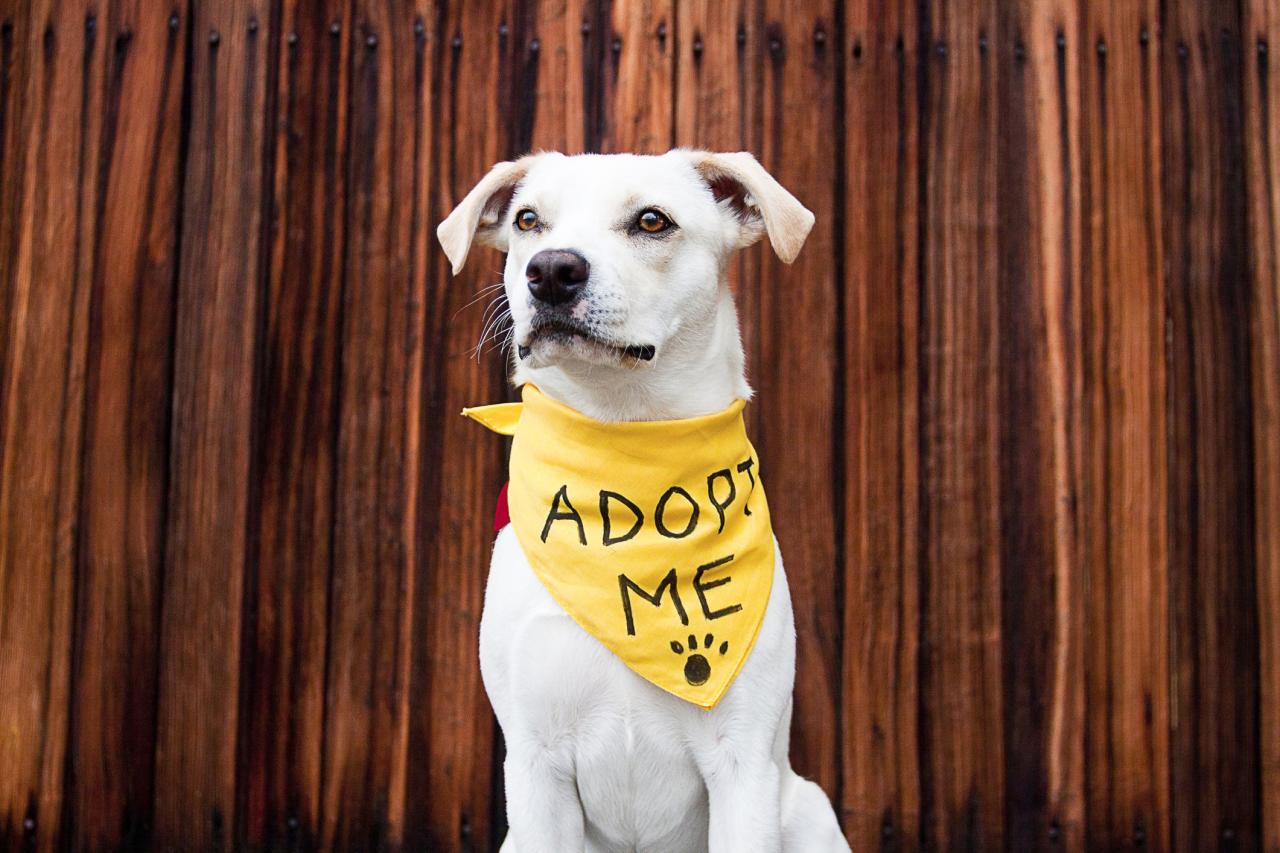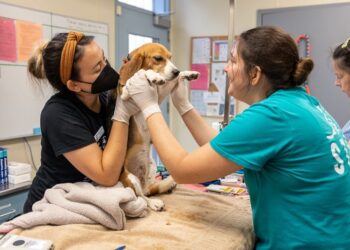The decision to adopt a dog or cat is a profoundly compassionate choice, welcoming an animal in need into your heart and home for a lifelong commitment to care and companionship, yet the excitement of this new beginning must be tempered by careful, strategic preparation.
Adopting a shelter pet, who often arrives with an unknown history, past trauma, or simply overwhelming stress from their recent environment change, requires a thoughtful transition plan to ensure their emotional stability and successful integration into your family structure.
The initial weeks are a sensitive period where the pet’s true personality, confidence level, and reliance on you as their primary source of security are established, making the process of decompression far more important than immediate bonding or rapid training.
This comprehensive guide will walk you through the essential phases—from critical pre-arrival pet-proofing and establishing the initial safe space to the “Two-Week Shutdown” protocol and slow, positive introduction to resident pets—equipping you with the knowledge to make your new companion feel safe, loved, and fully at home.
Pre-Adoption Planning and Preparation

A successful adoption starts long before the pet arrives, focusing on matching the pet to your lifestyle and making the home environment secure.
A. Assessing Lifestyle and Needs
- A. Before adopting, honestly assess your home environment, financial resources, daily schedule, and long-term commitment capacity.
- B. Research the energy level, grooming needs, and common health issues of the breed or type of animal you are considering.
- C. Ensure every member of the household, including children and elderly relatives, is prepared for the responsibilities and commitment of pet ownership.
- D. Consider how flexible your schedule is; most dogs cannot be left alone for more than four to six hours at a time without a break.
- E. Use the shelter staff or foster parents as a primary resource to match a pet’s known temperament to your family’s activity level and routine.
B. Essential Supplies Checklist
- A. Purchase high-quality food (the same brand the pet is currently eating for the first week to avoid digestive upset) and stainless steel bowls.
- B. Secure a comfortable, appropriately sized bed and a crate or carrier that will serve as the pet’s den and safe space.
- C. Have a sturdy leash and collar with an ID tag displaying your current contact information ready before the pet enters your car.
- D. For cats, buy a large litter box (one per cat plus one extra is the ideal ratio for multi-cat homes) and the litter type they are accustomed to using.
- E. Stock up on chew toys for dogs and a variety of scratching posts for cats to satisfy natural instincts and redirect potential destructive behavior.
C. Home Safety (Pet-Proofing)
- A. Secure all electrical cords, cables, and wires out of reach to prevent chewing, which can cause electrocution.
- B. Identify and remove all toxic household plants (like lilies, sago palms, or peace lilies) that pose a severe threat if ingested.
- C. Put away all small, easily swallowed items, such as coins, rubber bands, socks, or children’s small toy pieces.
- D. Secure all cabinets containing cleaning chemicals, medications, and garbage to prevent accidental poisoning.
- E. Use pet gates to temporarily restrict access to rooms or areas of the house that are unsafe or off-limits during the initial adjustment period.
The First 48 Hours—Structured Decompression
The initial introduction to the new home must be slow, quiet, and centered around providing a secure, predictable environment.
A. Designating the Safe Space
- A. Set up one small, quiet room (a spare bedroom or large bathroom) as the pet’s immediate safe haven and command center.
- B. This room should contain all their core resources: their bed, water, food, and litter box (or puppy pads), and be free of clutter.
- C. Upon arrival, take the pet directly to this room, allow them to exit the carrier or crate on their own terms, and then retreat.
- D. Do not force interaction or chase the pet if they immediately retreat to a hiding spot; respect their need for space.
- E. This limited space prevents the animal from becoming overwhelmed by the sights, sounds, and sheer size of the entire house.
B. Implementing the “Two-Week Shutdown” (Dogs)
- A. The Two-Week Shutdown is a critical, low-stimulation protocol designed to allow a newly adopted dog to decompress from shelter stress.
- B. Limit visitors and new introductions entirely for the first two weeks, allowing the dog to bond solely with the immediate household members.
- C. Keep the dog leashed at all times when they are outside the crate or safe room, even inside the house or fenced yard.
- D. Leashing prevents accidents, manages unwanted chewing, and subtly teaches the dog to rely on you for direction without relying on confrontation or punishment.
- E. Avoid overwhelming activities like dog parks, long car rides, or structured obedience training during this phase, focusing instead on quiet rest and routine.
C. Establishing Predictability
- A. Immediately establish a consistent, unchanging daily routine for feeding times, potty breaks, and short, quiet engagement sessions.
- B. Predictability is the emotional anchor for an anxious pet, helping them understand what to expect and building confidence in their new environment.
- C. Feed high-value treats and praise for calm, desired behaviors (like resting quietly in their bed) to reinforce a relaxed state.
- D. Ignore attention-seeking behaviors like whining or pawing, only rewarding them when they settle calmly.
Integration and Socialization
Introducing a new pet to existing animals and fully integrating them into the household must be done gradually, focusing on scent first.
A. Scent Exchange Protocol
- A. Before any face-to-face meeting, introduce the scent of the newcomer to the resident pet and vice-versa.
- B. Rub a small towel or blanket on the new pet and place it near the resident pet’s food dish or sleeping area.
- C. Feed both pets on opposite sides of the safe room door, gradually moving the food bowls closer to the door during subsequent meals.
- D. This positive association (good food happens when I smell the new pet) helps neutralize any territorial anxiety.
- E. For cats, allow the resident cat to explore the new pet’s confinement room while the new cat is secured elsewhere, allowing them to acclimate to the scent.
B. Introducing Dogs
- A. The first dog-to-dog meeting should always occur in a neutral territory (like a park or quiet street), not in your yard, to minimize territorial tension.
- B. Both dogs should be on separate leashes, handled by separate adults, and walked parallel to each other at a distance where both remain calm.
- C. Gradually decrease the distance, rewarding both dogs heavily for calm, non-reactive behavior before allowing a very brief, loose-leashed sniff-and-greet.
- D. Once inside the home, temporarily remove all high-value resources (toys, chew bones, food bowls) to prevent immediate resource guarding conflicts.
C. Introducing Cats and Dogs
- A. Ensure the cat has safe, reliable escape routes to vertical territory (cat trees, shelves) that are inaccessible to the dog.
- B. Keep the dog on a leash during all initial supervised interactions, reinforcing a “Sit” or “Down/Stay” command while rewarding them for ignoring the cat.
- C. Never force the cat to interact; allow the cat to observe and approach the dog on their own terms.
- D. Keep the dog and cat separated entirely when unsupervised until you are 100% certain that the cat is safe from injury.
Overcoming Common Post-Adoption Challenges

The true personality of the adopted pet emerges around the third week, which is when most behavioral issues surface.
A. Addressing House Training and Accidents
- A. Understand that accidents in the first week are normal, often caused by stress, confusion, or a lack of clarity on house rules.
- B. Maximize successful outdoor eliminations by taking dogs out immediately after waking, after eating, and after playtime.
- C. Use positive reinforcement—immediate praise and a high-value treat—for eliminating in the correct outdoor spot.
- D. Clean indoor accidents thoroughly with enzymatic cleaners to completely destroy the odor marker that attracts the pet back to the same spot.
- E. For cats eliminating outside the box, seek an immediate veterinary check-up to rule out a painful medical cause (like a UTI) before treating it as a behavioral issue.
B. Managing Destructive Behavior
- A. Destructive chewing or scratching is often rooted in boredom, anxiety, or unfulfilled instinctual needs.
- B. Redirect the behavior onto appropriate outlets by ensuring the pet has a rotation of engaging puzzle toys and high-value chew items.
- C. Increase the pet’s daily mental stimulation through training sessions and puzzle feeders, as a mentally exhausted pet is a calm pet.
- D. Temporarily use aversion products (like bitter apple spray) or environmental management (pet gates) to prevent access to highly tempting, off-limits items.
C. When to Seek Professional Guidance
- A. If the pet displays persistent signs of separation anxiety (destruction or vocalization only when alone), high-level fear, or any aggression, seek professional help.
- B. Consult your veterinarian first to rule out any underlying painful or medical conditions contributing to the behavior change.
- C. Seek a Veterinary Behaviorist (DACVB) or a certified applied animal behaviorist (CAAB) for customized, science-backed modification protocols.
- D. These experts can accurately diagnose the emotional root of the problem and recommend effective, fear-free treatment, including behavioral medication if necessary.
Conclusion
The decision to adopt marks the noble beginning of a devoted commitment, requiring strategic preparation and infinite patience to ensure the pet’s well-being.
Establishing a structured, calm environment through meticulous pet-proofing and the designated safe space is the crucial first step in fostering security and trust.
The implementation of the Two-Week Shutdown protocol is a necessary act of restraint and compassion, allowing the adopted animal essential time to decompress from past stress and observe their new world without feeling overwhelmed.
Successful integration relies on a slow, deliberate scent exchange process, ensuring that resident pets accept the newcomer’s presence as non-threatening and even positive.
Consistency in routine and the reliance on positive reinforcement solidify the pet’s understanding of household rules and significantly reduce anxiety-driven misbehavior.
Addressing challenges like house training or destructive acts requires owners to remain calm, avoid punishment, and proactively redirect instinctual behaviors onto appropriate resources.
Ultimately, navigating the complexities of adoption successfully is a profound testament to the owner’s commitment, resulting in a loyal, confident, and harmonious family member for years to come.







